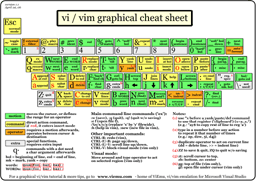Firefox 2: A Tour of Bon Echo Alpha 2
A great tour on Bon Echo Alpha 2, the early test release of Firefox 2, by well known Phoronix site. One of my best features seems to be the addition of an inline spell-checker for text boxes as well as better RSS capabilities. Though I startedsubscribing to RSS feeds just months ago, imagine that, I see this as great news for me. Some other features implemented are that found in Tab Mix Plus plug-in that I use, such as opennig linkks in new tabs rather than in new windows, session restoration, and support for Scalable Vector Graphics text. The final release for Firefox 2 is scheduled for an August 2006, which is not that far away. So, here is the review.
Released Friday afternoon was Mozilla Firefox Bon Echo Alpha 2 — the second development milestone in the road to Mozilla Firefox 2.0, which is expected for a release later this year. In this latest Firefox 2.0a2 release, which is targeted solely at developers and testers, are quite a few prominent changes. Rather than simply providing screenshots or the release notes for this feature-filled release, we have independently examined most of the changes, and today at Phoronix we have some details to share in regards to these newly implement features. Whatever browser you may be currently using, Mozilla Firefox v2.0 is suiting up to knock out Internet Explorer 7 and Opera. Before we begin, for those not familiar with Bon Echo, it serves as the pre-release code name for Mozilla Firefox v1.2.x, and its name is taken from the Bon Echo Provincial Park. This naming is similar to Deer Park for Mozilla Firefox v1.5.x.

Complete Tour with lots of pics.

 One of the secrets to making any software work well is knowing what to do when it won't work at all. Firefox is no different: If you know how to isolate, identify, and cure the most common problems, you can get back to surfing without missing a beat.
One of the secrets to making any software work well is knowing what to do when it won't work at all. Firefox is no different: If you know how to isolate, identify, and cure the most common problems, you can get back to surfing without missing a beat. This one is for the visual learners out there. I love vim, and have been using it for years, but I'm still learning new things about it all the time. For noobs to vim, the commands and so on can be a bit … overwhelming, shall we say.
This one is for the visual learners out there. I love vim, and have been using it for years, but I'm still learning new things about it all the time. For noobs to vim, the commands and so on can be a bit … overwhelming, shall we say.